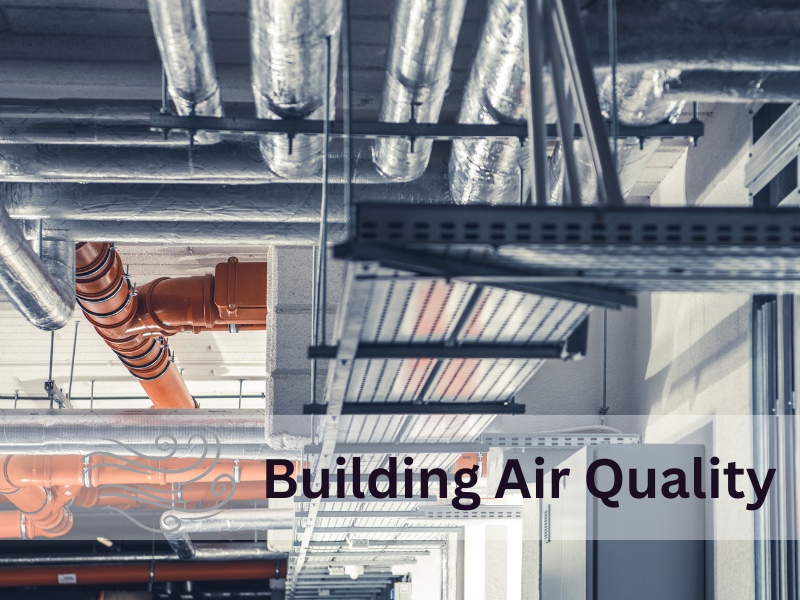In today’s world, ensuring that buildings are energy-efficient and provide a healthy indoor environment is essential. One of the best ways to achieve this balance is through the use of CO2 sensors integrated with Building Management Systems (BMS). These systems not only improve air quality but also reduce energy consumption, making them a must-have for modern facilities.
What is a Building Management System (BMS)?
A Building Management System (BMS) is a fully computerized and automated system designed to monitor and control various building operations, including ventilation, heating, lighting, and electrical systems. With a centralized system like BMS, facility managers have greater control over building functions, ensuring smooth and efficient operations.
However, the real advantage of a BMS lies in its ability to maintain optimal indoor air quality. By integrating CO2 sensors into the system, buildings can automatically adjust their ventilation levels to ensure that air quality is always at its best. This is where demand-controlled ventilation (DCV) comes in, using real-time CO2 data to maintain the perfect balance between energy efficiency and air quality.
How CO2 Sensors Work in a BMS
CO2 sensors are devices that measure the concentration of carbon dioxide in the air, typically reported in parts per million (ppm). High levels of CO2 in a building are a strong indicator of poor ventilation, which can lead to discomfort, health issues, and reduced productivity among occupants.
In a BMS, CO2 sensors are used to monitor indoor air quality in real time. When the CO2 levels rise beyond acceptable limits, the system automatically triggers ventilation adjustments to bring in fresh air. This ensures that occupants are always breathing clean air, without the need to constantly over-ventilate, which can waste energy.
The Benefits of CO2 Sensors for Building Management
Integrating CO2 sensors with BMS offers multiple benefits, including:
1. Energy Efficiency
With CO2 sensors, ventilation systems are no longer running at full capacity when it isn’t necessary. Instead, they adjust airflow based on the actual CO2 levels in the building. This reduces the amount of energy required for heating or cooling the fresh air brought in, leading to significant energy savings.
2. Improved Indoor Air Quality
Good air quality is essential for the health and productivity of building occupants. High CO2 levels can cause headaches, drowsiness, and decreased cognitive function. By maintaining optimal CO2 levels, the building provides a healthier environment, which translates to higher productivity and reduced absenteeism.
3. Reduced Operational Costs
By avoiding unnecessary over-ventilation, CO2 sensors help reduce the costs associated with energy consumption. The more efficiently a building operates, the lower the operational costs, leading to financial savings over time.
CO2 Sensors Drive Productivity and Cost Savings
Buildings equipped with CO2 sensors not only improve occupant health but also contribute to a more productive workplace. Poor ventilation leads to higher CO2 levels, which can reduce cognitive function, leading to slower work output and decreased overall efficiency. By maintaining ideal air quality, employees can work at their best, improving the company’s productivity.
Moreover, the financial benefits of CO2 sensors go beyond increased productivity. Reducing energy waste by fine-tuning ventilation systems lowers utility bills and decreases the overall environmental impact of building operations, making it a win-win for both businesses and the planet.
The Future of Building Management with CO2 Sensors
As technology continues to advance, the role of CO2 sensors in smart building management will grow. With the integration of the Internet of Things (IoT), CO2 sensors and other air quality monitoring devices can collect vast amounts of data that can be analyzed for predictive maintenance, better energy management, and enhanced indoor air quality control.
Additionally, buildings that use smart ventilation systems will see further reductions in energy use, operational costs, and environmental impact, making them highly attractive to building owners and tenants alike.
CO2 sensors integrated with Building Management Systems offer a powerful solution for optimizing indoor air quality while reducing energy consumption. By using smart tools like HibouAir, building managers can ensure that occupants are breathing fresh, clean air while maintaining energy efficiency and cutting operational costs.
As businesses increasingly recognize the value of healthy work environments, investing in CO2 sensors and air quality monitoring will become the norm, driving productivity, improving health outcomes, and saving money in the long run.

